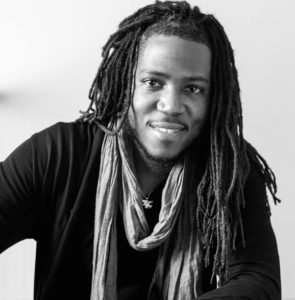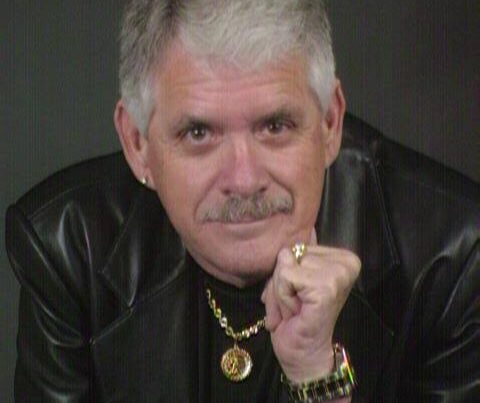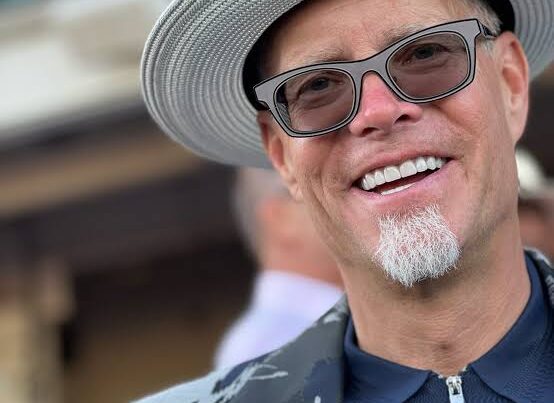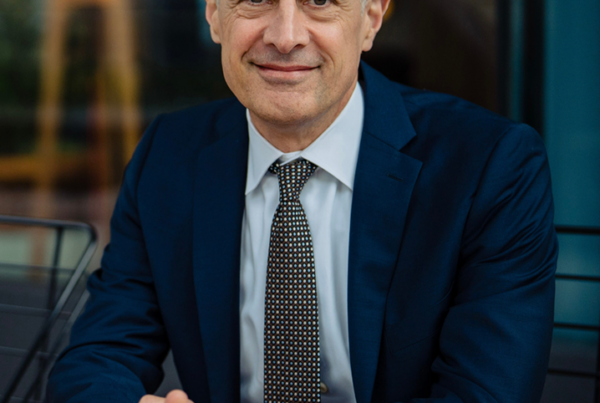Podcast: Play in new window | Download
Subscribe: RSS
How do you release the trauma, stories and false beliefs that no longer serve you?

Nathaniel Brown
Nathaniel J. Brown is the founder of This-Functional Life and Wellness – a personal development brand geared towards teaching and leading others into a new perspective. Practicing what he calls “Perspective Coaching”, Nathaniel is able to actively listen to your story and show you how to see it differently, so that you gain access to the secrets and lessons within your experiences.
After 30 years of dealing with anger, mistrust, hurt, betrayal, insecurity and mis-identity, he has taken his own advice and dug deep into his childhood traumas. Nathaniel discovered that most of his interpersonal and relational issues stemmed from his un-addressed pain of abuse and an inappropriate sexual encounter with a family member at 8 years old.
Nathaniel then started doing the deep work; the work of shifting his perspective; being truthful about his pain, and reintegrating the child into the man. Nathaniel’s mission now is to lead as many people as he can out of the dark cloud of their old story and live into their new TRUTH.
What We Discuss With Nathaniel Brown in this Episode
- How to unravel the stories we tell ourselves
- His telltale sign of unhealed childhood trauma
- How he re-integrated the child inside with the adult man now
- Where do beliefs come from and how do we change our perspective on them?
- How do you shift the perspective in others?
- Awareness as the first step to transformation
Transcript Highlights
How did you get started in this perspective coaching work?
About 10 or 12 years ago, some information came across my lap that caused me to question a lot of things that I thought were emphatic truths. It was like a thread in a sweater; you pull it the right way and it starts to unravel the entire sleeve. Then you realize that the sweater isn’t incorruptible. You realize that it has flaws in the threading. All of that stuff becomes exposed.
So a lot of things came unraveled for me. What I thought was real, what I thought was true, what I thought was concrete was quite malleable. I had to open my mind beyond the perspective of my hub of belief systems. Everything I thought about government, everything I thought about the way life works, relationships – all of it came into question.
I sat on the side of my bed one day. It was two o’clock in the morning. I said a prayer, show me how deep the rabbit hole goes. I didn’t realize that the rabbit hole would lead me into me. And for the next 10 years, from 10 years up till now I was unraveling Nathaniel. I was finding myself in the stories of ancient scriptures. I can’t judge Nebuchadnezzar because Nebuchadnezzar is sitting right here in me. So I had to go deep within some of that stuff.
Then I went to a Tony Robbins Unleash The Power Within event. Two months before that happened my wife and I got into this really heated argument and I pulled up Netflix. I Am Not Your Guru showed up and I watched it. And I said, this is what I want to do. This is it. This is the thing. It was about 2016 at the time. That’s when I started really looking into how I could serve people.
It really opened my eyes to a world beyond what I thought coaching was. It’s actually caring for yourself first, before you can care for another human being. I had to do that self-care work. I had to revisit some of those childhood traumas.
What was actually occurring that caused you to realize you needed to do some inner healing?
For me, it was anger, and it was both ways. It was both external lashing out and also internal where I was exploding within myself about things that were happening around me. I realized that I was being controlled by all these external factors.
So I decided to get some help. I went to anger management. That’s where the childhood trauma came out in the session. I was able to emote that experience and heal forward.
When you fully feel the thing, you fully experience it. I had not fully engaged the experience to its point of healing for myself. I had to revisit that scenario several times. It wasn’t just one time. I had to go back and back and back. It was like being in a class that I couldn’t pass because I kept skipping over the issue – the issue wasn’t just talking about it. The issue was feeling the pain of it fully so that I could heal fully. You’ve got to get the stuff out of the wound first, before you cover it up and dress it, right?
When I was able to pull back and see, hey, there’s an eight year old little boy here trapped in a 30 year old trauma. Now we get to re-integrate these two back into one whole being.
How do you re-integrate the inner child with the adult into one whole being?
Here’s where the mystery of it all comes into play. About two years ago, I was sitting in my bedroom. I came across this meditation about you are not enough. It was like healing those inner things. I felt this heat here in my heart. Usually feel it when I’m feeling inspired to move on something where there’s compassion.
So I went with that heart leading. The minute I closed my eyes, I started to walk down a spiral staircase. At the bottom of the staircase was a door. I walked through the door and was standing in front of my house in South Carolina. I walk in the door of the house. The house is abandoned. There’s no furniture. There’s no, there’s no people. There’s no parents, no sister. Nobody’s there. But there’s a little boy in the bedroom where I grew up sitting on a box spring with his head in his hands. I walked over and pulled his hands away; he looked up and I was looking at myself. It was me at eight years old, I had walked into the past from my bedroom to the eight year old boy that had been traumatized.
I looked him in the face and he trusted no one. I had to regain his trust. I had to, literally in that moment, I had to let him know how much he was loved, how much he was accepted, how much nothing was wrong with him. I literally had to nurture the child in that moment. When I got the trust factor re-established I took the child by the hand, and said, can I take you a little on a walk?
We walked out the front door, left the abandoned house behind. We walked into the street. The doorway appeared again. I walked back up the spiral staircase. I have this little boy in my hand and it’s me at eight years old. I’m showing him where I am now and where he had been.
So I’m bridging the gap with the separation between the child that had the trauma, and the man that hadn’t dealt with it. I brought him inside said to him, this is your home. Now this is home. Now I want you to come in. I invited him in. He was reluctant, but he came. I walked through the house. I showed him my room. I showed him my son’s rooms. I showed him the playroom. I showed him the toys. I showed him all the things that were available in the space.
And he felt, Oh, this is home. And I looked him in his face and said, I love you. I love you dearly. He looked at me and the boy literally walked inside. He was still holding my hand, but he literally walked inside my body. That’s when I felt the integration happened. I was fully reintegrated and I had fully dealt with the issue of the childhood trauma.
…
The lie we’ve been told is it’s not that simple. Yes. It really is that simple. Everything that’s happening with us is happening in us. Life is happening, not just for us or to us, it’s happening from us. We are radiating our experiences out into the external world. We’re living them here first and they become concrete belief systems. And then the world around us matches, aligns, attunes, agrees, and allows those belief systems to come into fruition.
Where do beliefs come from and how do we transform our perspective on them?
There’s a book I read where the author talks about pendulums. How pendulums are set up to receive energy, but not give energy back. So a belief system is how Don Miguel Reese would call an attachment point. That’s exactly what it is. It is a common thought that everybody agrees on that becomes the belief system.
They’re formed through traditions and cultural agreements. The idea is to detach from these extraneous belief systems. However they’re formed, they’re formed through teaching. So you get indoctrinated.
The belief system that you attach to is something that you did not allow your curiosity to lean into fully to extract it, to really unravel it. Pull that thread and let it unravel. If you want to sew it back together into a star or an animal figurine or whatever you want to do, then now you’re in control, right? The pendulum isn’t swinging, you’re swinging the pendulum and you can retract that energy anytime you want.
I looked at my belief systems and I looked at what was happening in my life. I realized something about this belief system seems to be the antithesis of what I actually want in life. It’s not feeding the thing I want. It’s sort of clashing. I found myself arguing too much about what I believe and belief systems shouldn’t be something you argue. You shouldn’t have to argue about what you believe. Just let the belief prove itself.
Like I said, you pull the sweater, let the thread unravel, and then set something else up. Your new belief. That’s your new thing that you formed. And you will believe that until something else comes along to challenge it, right? Because beliefs are supposed to grow. You go from faith to faith, right? Belief to belief, you don’t stay at one level.
The problem is everybody stays at what they were taught, they don’t lean into curiosity to experience more. In fact, Yeshua (Jesus) says, “greater works you’ll do than changing water into wine and raising the dead.”
All of these things that are written in ancient text are base models. Hebrew says these are elementary principles of the faith of belief. That means that there’s more to pack onto.
My favorite quote by Beethoven is, “Don’t only practice your art; force your way into its secrets because it and knowledge can raise men to the divine.”
A powerful quote, one of the best quotes I’ve ever heard. It’s my mantra. I look deep into things and my wife has said, “You always change.” That’s a good thing. Because if I stayed the same, that stagnant water is not alive. It’s living waters that gives life to others.
How do you help shift the perspective of other people?
The first thing you do is consider that they’re correct. Maybe this is going to be a good analogy. We do something here on the farm. We make tinctures out of hemp flour. So we grow our own hemp and with doing so, it gives us an opportunity to learn about cannabinoids and all this other good stuff. And what I found was that you can extract certain elements from the flour based on the solvent that you’re using to for the extraction point. So you can be the extractor or the extracted. As people who want to change perspectives, you actually have to be willing to be extracted from, not being the extractor.
That puts you in the place of empathy. You’re now in the path of someone else’s perspective. You now submit everything you think you know about it, all for the sake of understanding where someone else might be coming from; that their perspective is correct based on what they believe. It’s completely okay.
The problem is we want to make everybody believe what we believe or otherwise we can’t be aligned with them. You’re Republican and I’m Democrat. We can’t get together.
Well, wait a minute. Timeout. Are we not a part of the same country here? Again, it’s another pendulum. It’s the illusion of separation. How about we find common ground first? What do we agree on – that’s the question.
Have the conversation with the intention to find agreement, and you will find it. If you go into a conversation with someone who has a different perspective than you and you are only looking for an argument, then you will find more to argue for and over. Because it’s what you’re aligned to – your attunement is to arguing. You have agreed with arguments of behavior and now you allow it.
Dr. Henry Cloud says something very profound. He says, always leave things better than you found it. Especially people. What if we came into every conversation with that intention – my intention is to leave this person, their perspective, their heart, all of their belief systems, everything intact. We’re not here to dismantle people. We’re not here to break anybody down. We’re here to help mold ourselves with them. We are here to unify. We’re here to gel and meld together, become one moving unit, one whole being.
I love Bruce Lipton about this. He said we’re the microcosm of a macrocosm of a being. You look under the skin and we have all these little, these little structures and these little life forms that are moving about. And then when you peer back from a galactic standpoint, you have all these little microbes and all these little life forms that are moving about. But then how much more, how much beyond that is the truth. And it goes on and on and on. We are a literal macrocosm of a microcosm. And then we are the microcosm of a macrocosm. We are moving together as one body. One thing is the arm, the other thing is the leg. But without the arm and the leg, there’s no real movement. There’s no real interaction. And the whole thing is all about experience through connection.
Tell us a little more about yourself and who you work with.
I work with humans. My mission is to mend human hearts. I do it through helping people connect to themselves. The issue I’ve found across the board is a disconnection with self. Unfortunately personal development has educated them in this idea that they have to go somewhere to get something in order to be who they are. And that is not the case.
I have worked with people who are suicidal. I have worked with people who are stuck. I know what it feels like to deal with those thoughts. They’re not separate from my experience. I’ve just learned how to master them. I learned not to be the victim of them. And I tell people that you don’t have to stay at victim anymore. There’s a platform beyond victim and that’s overcomer. But then there’s a platform beyond overcoming and that’s master. You go from victim to overcomer to master. And at mastery level, you no longer need to hold onto the trauma to say, I did it. It just becomes a part of your healing.
Talk about awareness as the first step to transformation.
So awareness is very simple. It’s what I call the observer effect. It’s the I and myself. The last couple of people that I had an opportunity to coach with, a one lady came to me and said, look, I’m just ready to kill myself. The first question I asked them is identify who “I” is and who’s “myself’. Because if you can actually show them that they’ve split themselves in a way that now they are three parts. Now they’ve got these alter egos.
The moment you ask for help, you’re aware. Anybody that actually wants to really commit suicide, you never hear from until after it’s done. Anybody that has an issue that they don’t want anybody to deal with, you’ll never hear of. But when they start talking about it, it’s the subconscious mind. It actually tells the truth all the time and it’s disseminating information. It’s a cry for help. So someone says, I want to kill myself. That means that they want help identifying who I and myself is. They are aware. Now the minute they ask for help is the sign of awareness.
Connect With Nathaniel Brown
- LinkedIn: https://www.linkedin.com/in/nathanieljbrownconsulting/
- Facebook: https://www.facebook.com/raiseshifthealchange
- Instagram: https://www.instagram.com/thisfunctionalwellness
Did You Enjoy The Podcast?
If you enjoyed this episode please let us know! 5-star reviews for the Leaders Of Transformation podcast on Apple Podcasts, Spotify, Pandora or Stitcher are greatly appreciated. This helps us reach more purpose-driven entrepreneurs seeking to make a positive impact in the world. Thank you. Together, we make a difference!
Additional Episodes You May Like
- 357: Michael Arterberry: Shake Off The Dirt and Move Forward
- 324: Keren Eldad: How To Overcome The Superstar Paradox and Experience True Success
- 278: May McCarthy: Success Is Not A Secret, It’s A System
- 270: James Garrett: Brainhacking and The Deep Change Project
- 219: Masha Malka: Master Your Emotions One Minute at a Time
- 141: Tim Gallwey: Part 1 The Inner Coach – Expanding Your Capacity To Excel










